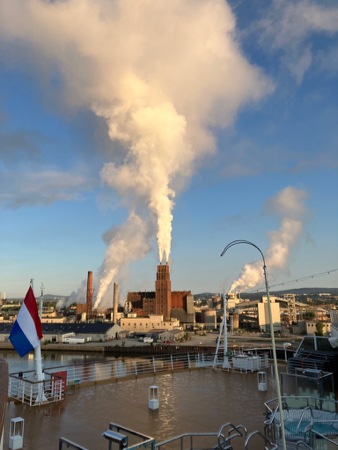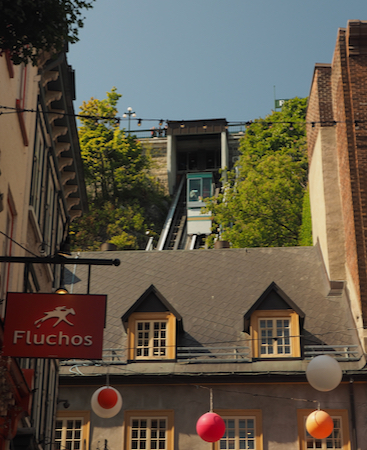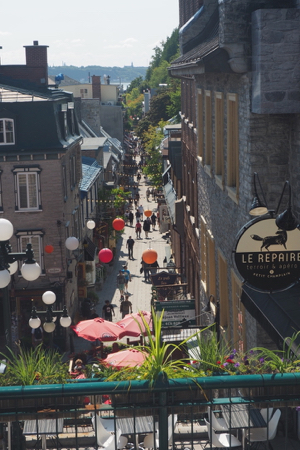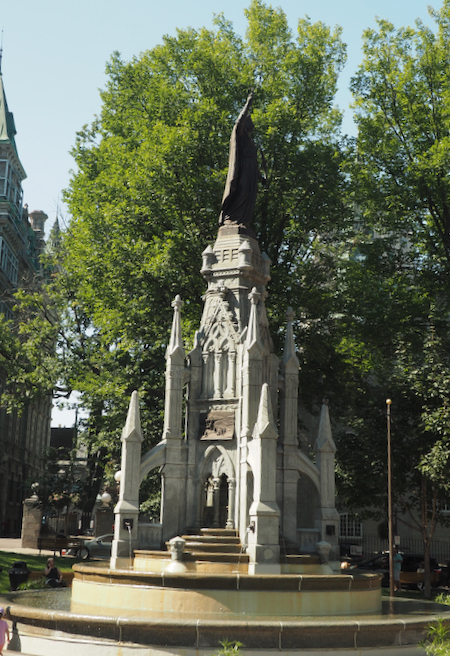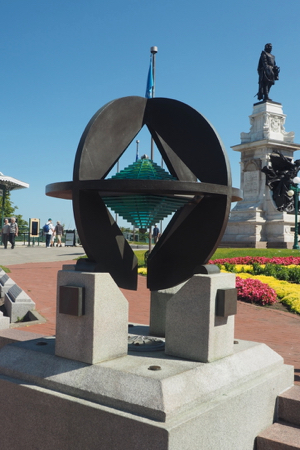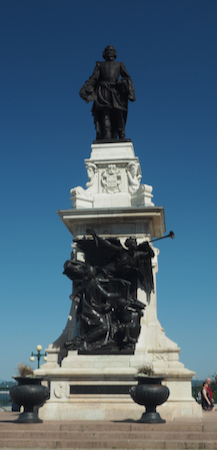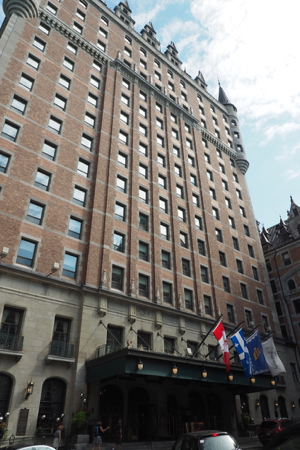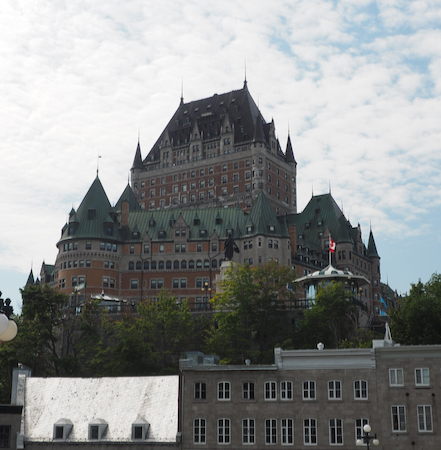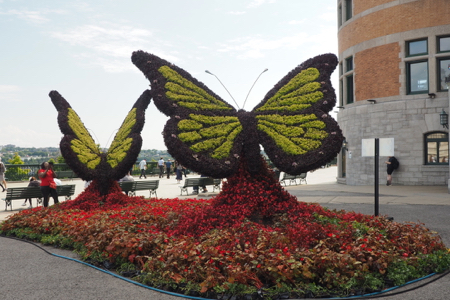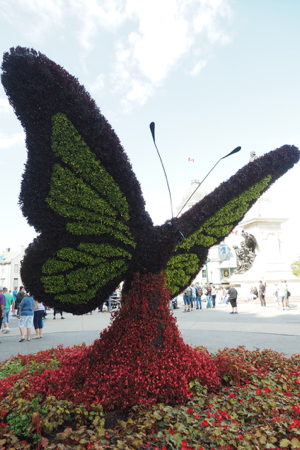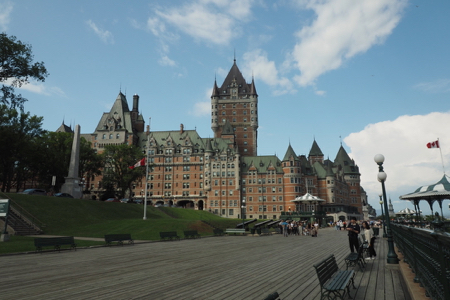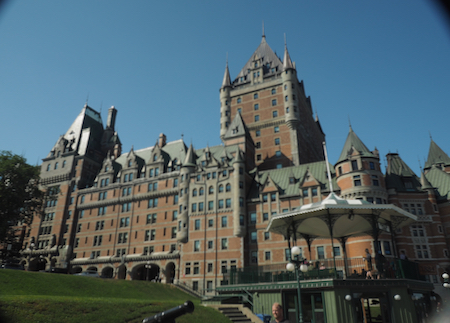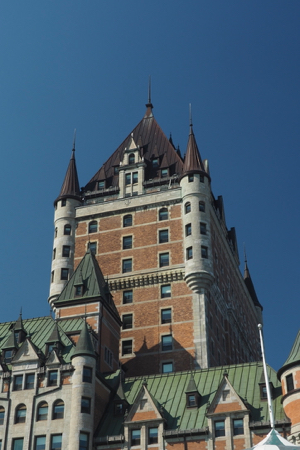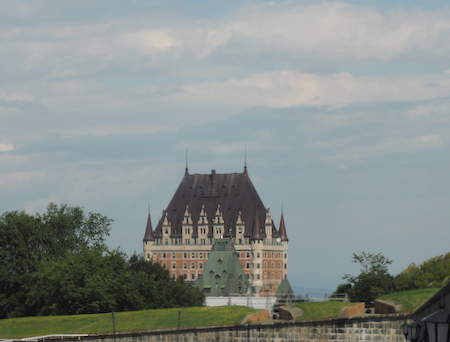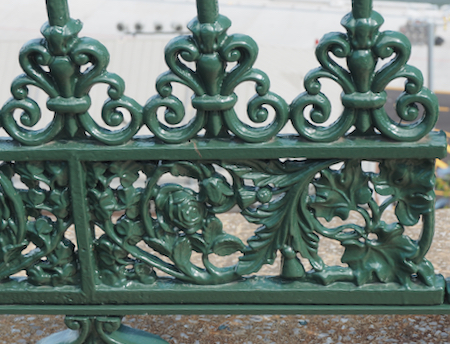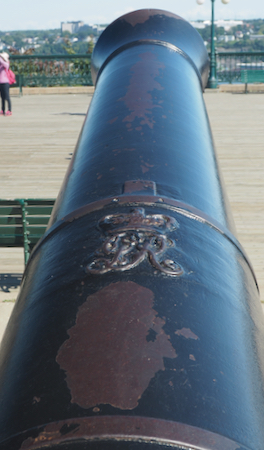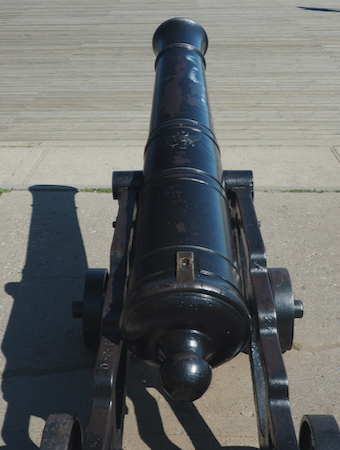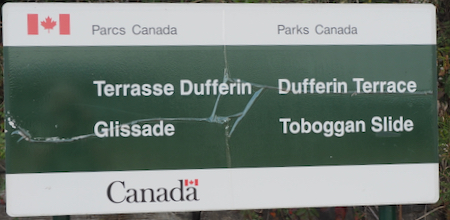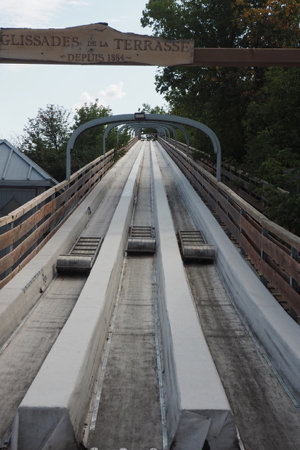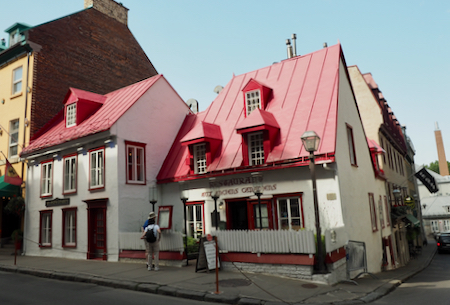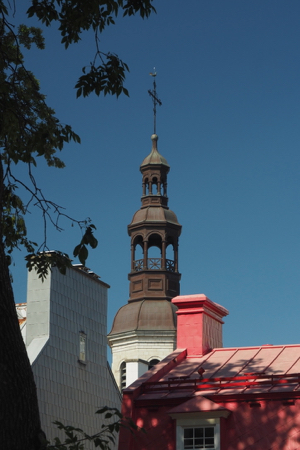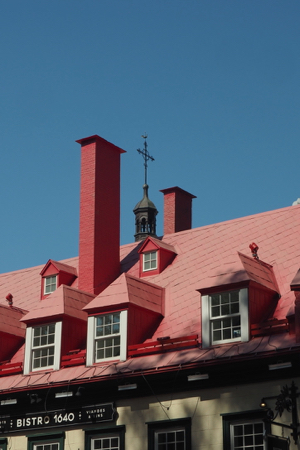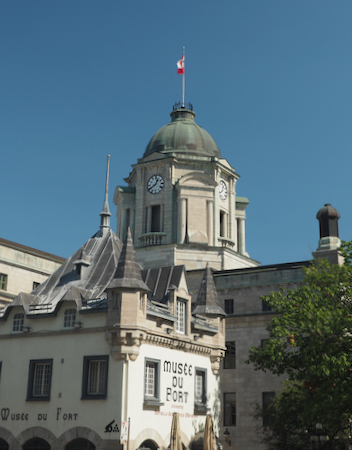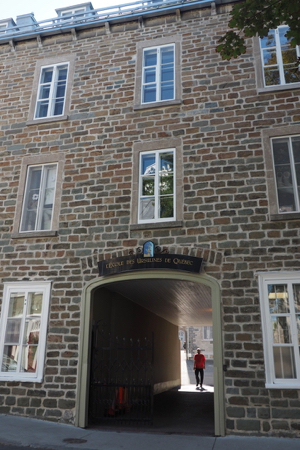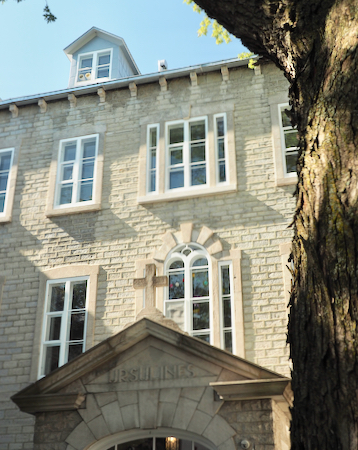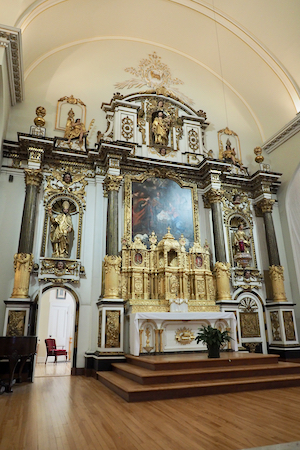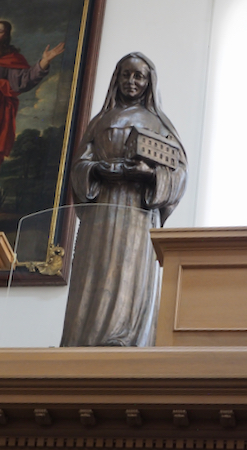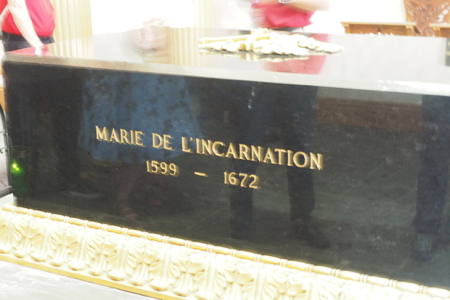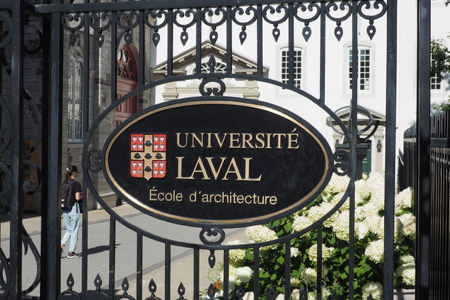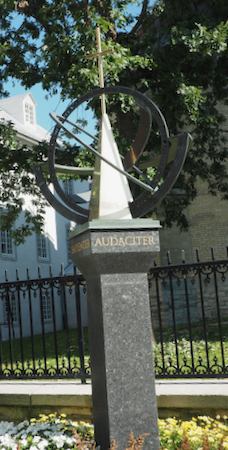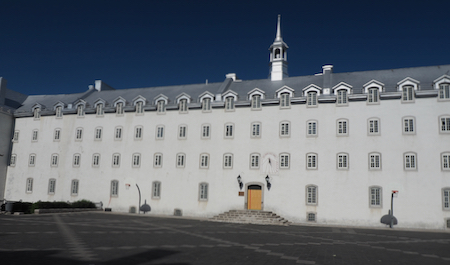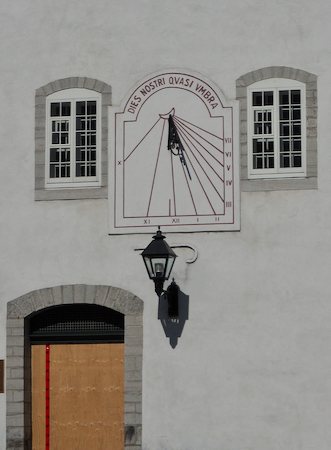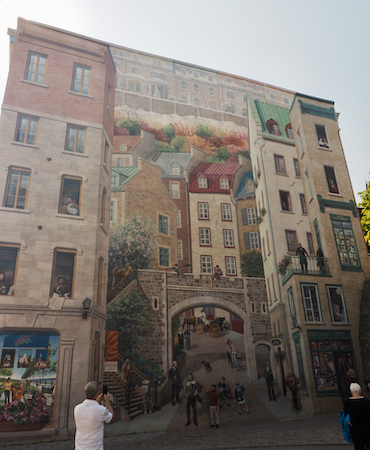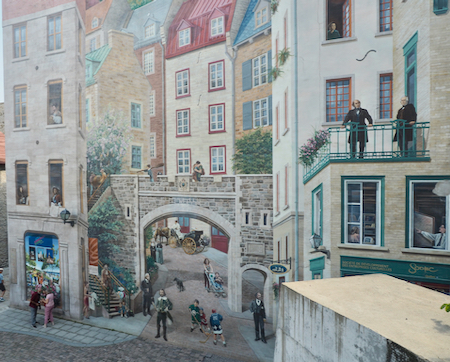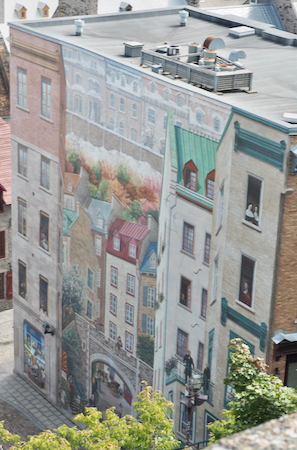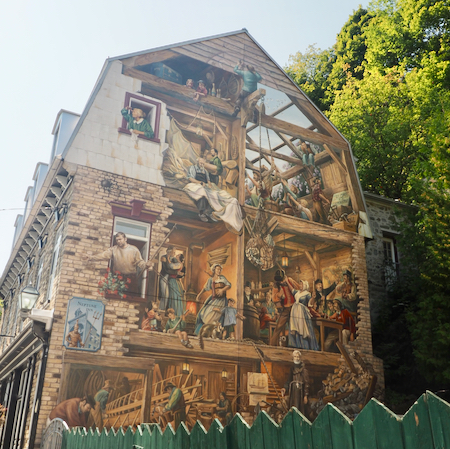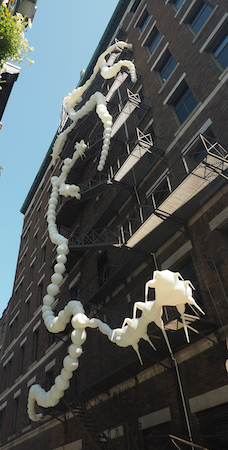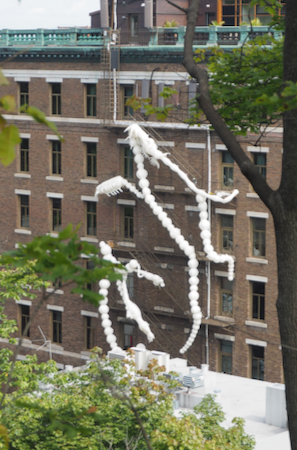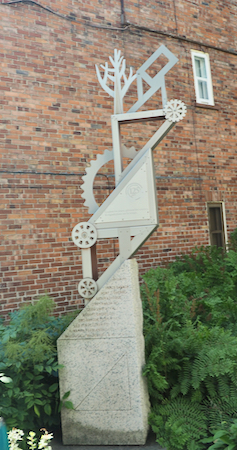Wed., 9/7/22 - Quebec City
At 9 AM, we disembarked the MS Nieuw Statendam, retrieved our suitcases in the terminal building, and WALKED to our hotel, the Port Royal. It took 35 minutes, with some brief stops to catch our breath. It was just over a mile and we had pedestrian or bicycle walkways all the way so dragging the wheeled suitcases wasn't too difficult. The line of people in the terminal who were waiting for a taxi was so long that we are sure we were at our hotel before half of them got a cab.
When we scheduled these extra couple days in Quebec City, we also scheduled a Wednesday afternoon (1 PM) city tour with Viator (it is really a company who arrange various tours with local tour companies) and planned to spend the rest of the time sightseeing on our own.
The photos that follow are organized around the things we saw on the Viator tour; the things we saw while on our own; one section of photos of some of the art work around the old city; and a section containing photos of the interesting signs we saw.
Flag of Quebec City
From the ship
Looking toward the city from the ship
With our luggage safely stored at the hotel, we wandered in the direction of the funicular and the tourist info center to meet our Viator tour guide for a 2-hour city walking tour. While waiting for the tour to begin, we found a Starbucks in the Chateau Frontenac and got mochas and pastries for $24.00 Canadian! Expensive treat.
Funicular up to the Chateau Frontenac
View from the top of the steps that are the alternative
to the funicular
At 1 PM we met our guide Richard and the rest of the group at the Tourist Information building.
Richard was very good. He is a native Quebecois and gave us a very extensive tour and provided quite a lot of history of the area. He told many stories about the origin and meaning of the landmarks; about the wars; and about the kings and other important people, many memorialized with statues, as we strolled past the city's landmarks.
Fountain at the Place d'Armes commemorating the three-hundred year anniversary of the arrival of the Recollet Fathers in Québec
UNESCO Monument commemorates Old Quebec's designation as a "world heritage treasure"
Champlain Monument on Dufferin Terrace in front of the Chateau Frontenac
Sign for the Chateau Frontenac
The Chateau sits on the promontory of Quebec and dominates all views of the Old City
The Chateau Frontenac was built as the railroad (Canadian Pacific) was being built in 1893 to allow people to travel around. It now has six wings and the center tower was added in 1924. It has 611 rooms - and a Starbucks. Roosevelt and Churchill met in the Pink Room in 1943 and 1944 to plan D-Day and the terms of the treaty ending WWII.
Front entrance to the Chateau Frontenac
Chateau Frontenac
Flower art on the plaza in front of the Chateau Frontenac
Chateau Frontenac
The boardwalk promenade extends along the river, in front of the Chateau, from the center of the city to the Plains of Abraham and the Citadel.
Chateau Frontenac
Chateau Frontenac
Corner turret
Chateau Frontenac - from the Citadelle
Wrought iron fence above the river in front of the Chateau Frontenac
British-made cannon in front of the Chateau Frontenac
Russian-made cannon from the Crimean War in front of the Chateau Frontenac
Sign for the toboggan slide at the west end of the Dufferin Terrace in front of the Chateau Frontenac
Toboggan slide
Maison Jacquet - oldest building in Quebec City
Cathedral-Basilica of Notre-Dame de Quebec - steeple towering above the city
Cathedral-Basilica of Notre-Dame de Quebec - a closer view
Bistro 1640 - a restaurant - I think I liked the red roof and the view of the steeple of the Cathedral
Monument commemorating the Old Quebec City Heritage Site
The Fort Museum and the tower of the old post office building
Our tour took us to the site where the Ursulines, a reclusive order of nuns, once had a school for native and immigrant girls. During the French Revolution, several religious paintings were stashed in the Ursuline church to save them. A few remain in the church.
Marie Guyart, who was born in France, had a vision and came to America and started the Ursulines in Quebec. She was canonized in 2014 as Ste. Marie de L’Incarnation. She is buried in the church.
Ursuline School
Ursuline Convent
Chapel at the Monastery of the Ursulines
Statue and grave of Ste. Marie de L’Incarnation
Laval University school of Architecture
Laval University school of Architecture
Sun dial at Laval University school of Architecture
Holy Door (one of only seven in the world) at the Cathedral-Basilica of Notre-Dame de Quebec
Quebec City is full of museums, works of art, statues, monuments, etc., some more modern than others.
One of the most eye-catching works of art is a mural on the side of a four story building that covers the entire 4-story wall. You could spend hours looking at all the scenes portrayed in this one work of art. Richard told us a painter from Lyon, France was commissioned to paint it. We saw the same kind of building wall paintings when we were in Lyon earlier in the year.
Huge wall mural depicting the story of Quebec City
You could spend a lot of time looking at all the things depicted on this wall mural.
The mural includes 15 historic figures and many of Quebec's leading artists and writers
Looking down at the mural from the street above
Mural advertising the Museum of Bad Art
Fresque du Petit-Champlain - wall mural depicting milestones
in the history of Quebec City's working-class waterfront neighborhood - Cap-Blanc
We saw this next work of art both from the street, as we walked under it, and from above, while walking up the hill. It, and the other two "odd" pieces below are part of a public art display called the Passages Insolites 2021 that "marks the return of the Museum of Bad Art with a new selection of the 'best of the worst' in art, featuring some sixty works of dubious aesthetic."
The object on the wall was originally displayed floating on the water of the Bassin Louise. It has been adapted to be displayed on the wall. The description on the right is quoted below:
"A strange specimen is proliferating wildly on the surface of Bassin Louise. The inflatable installation represents and magnifies the anatomical details of rotifers, microscopic creatures with fascinating biological adaptations. When they sense predators, rotifers dry out so they can be swept to safety by the wind. And as they travel, they absorb the DNA of nearby species and recombine it with their own, ensuring the survival of the species while scattering their own DNA."
"An Adaptive Moment" by Nicole Banowetz
"An Adaptive Moment"
This one is called "HopeAndHealingCanada" by Tracey-Mae Chambers
"Still Not My Story" by Vincent Olinet
Monument to the 125th anniversary of the funicular in Quebec City
Amphitrite Fountain and Black Granite Reflecting Pool
| Return to Top | Return to Itinerary | Return to Trips page to view other trips | Return to Dreamcatcher Home Page |

